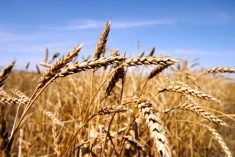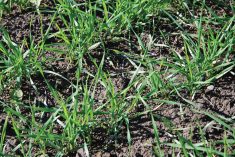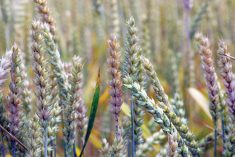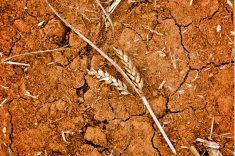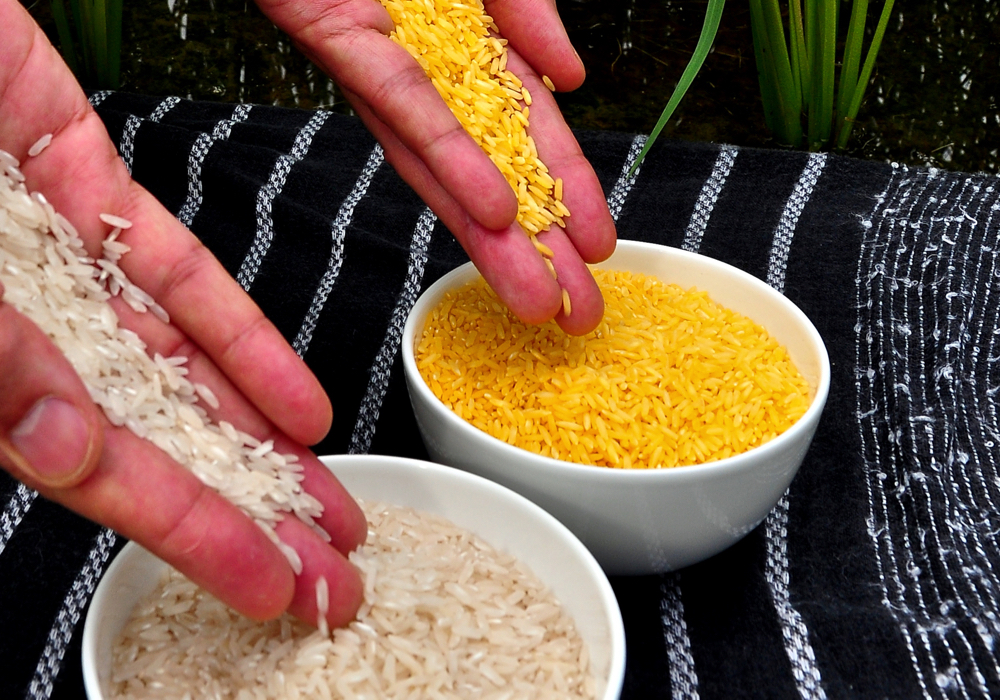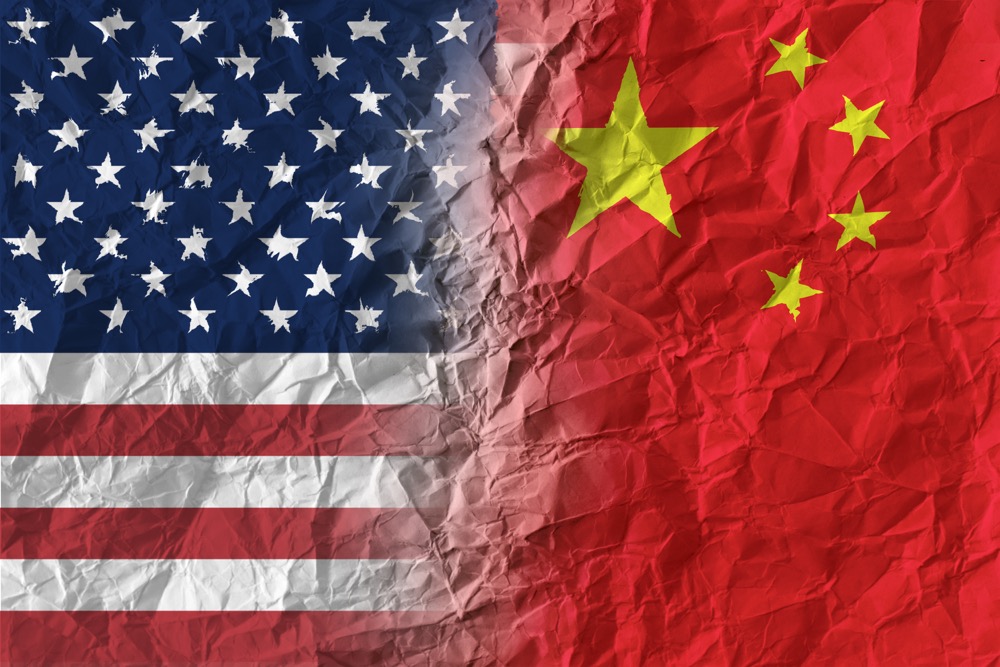In Zambia, it’s practically everywhere.
Maize is in tiny garden plots, on small farms, huge estates, in markets and on dinner plates.
Since its introduction to Africa by the Portuguese in the 16th century, maize has become the main staple crop in this region. Two megalithic-size cobs even flank the entrance to the Zambia National Farmers Union headquarters in the capital city of Lusaka.
But there is one thing that sets Zambian maize, or corn, apart from that found in much of North America — it’s not genetically modified.
In fact no crop grown in the landlocked, sub-Saharan nation is genetically modified. GMOs are illegal in Zambia.

“There are a lot of countries that grow GMO, and some of those countries are our neighbours,” said Given Lubinda, Zambia’s minister of agriculture and livestock. “But we also know a lot of those countries are having problems with that. And so we have made the decision that we will not grow genetically modified crops.”
Lubinda noted that while neighbouring countries like South Africa are able to, on the whole, produce crops like maize more cheaply, the introduction of genetically modified varieties has not benefited smallholder farmers, of which there are an estimated 600,000 in Zambia. These farmers often farm less than one hectare of land, and cannot afford to buy expensive seeds or inputs, he said — at least not without incurring a lot of debt and risk.
Read Also

Why agriculture is Canada’s energy ace
Why isn’t agriculture getting more play in Canada’s quest for efficient, renewable energy production? It should be
Export advantage
South African production can at times depress the price of corn and other crops in the region, but being GMO free gives Zambia a leg up in many international markets.
“We have found ourselves in a niche market,” said Ndambo Ndambo, executive director of the Zambian National Farmers Union. “Some countries want non-GMO, and we are the only country in the region that has no GMOs. Therefore we are able to compete comfortably.”
Much of Zambia’s surplus corn goes to neighbouring states such as Zimbabwe, but European countries such as the Netherlands also import GMO-free crops, such as baby corn and soybeans.
But it’s not just benefits that are being considered. As a nation, Zambia is also concerned about the potential risks biotechnology may carry.
“We have seen that if you have GMO seed, still, it mostly belongs to the promoter of it,” said Ndambo, citing plant breeders’ rights as a major concern. “Our genetics that we have, could all be forgotten if we all rush towards GMO… it would all be in the hands of these big corporate guys, and eventually we would have nothing.”

Clearly, food safety also weighs on the minds of elected officials and consumers alike.
In a move that stunned many observers, Zambia rejected food aid during a regional famine in 2002 because it contained genetically engineered corn from the United States.
Malawi, Mozambique and Zimbabwe accepted the donated corn after it had been milled by South Africa to ensure no viable seeds entered their countries. However, Zambia’s president at the time rejected it entirely, calling it “poison.”
Not interested
Speaking at the 2002 Earth Summit in Johannesburg, then president Levy Mwanawasa said that “we may be poor and experiencing severe food shortages, but we are not ready to expose our people to ill-defined risk.”
Today, any product containing genetically modified ingredients must receive approval from the National Biosafety Authority before it can be imported into the country and a group of 12 civil society organizations operating under the banner Zambian Alliance for Agro-ecology and Biodiversity Conservation works to maintain tight guidelines.
In a statement issued earlier this year, the organization said it felt it would be wrong to move towards GMOs, as other nations are moving away from them.
Ndambo said that with few exceptions, farmers agree with the stance.
He also stressed that hybrid crops had not yet reached their full potential in Zambia, leaving growers with a lot of room to improve yields without turning to more expensive technologies.
“We have not yet exhausted the application of hybrids,” he said, noting that with access to fertilizer and extension services yields could as much as quadruple without ever changing the variety of crop being grown.
“The benefits that are pronounced and marketed about GMOs, have not proved significant if you compare them with the current technology we have,” Ndamdo said. “The difference has not been so compelling for people to want to move to it.”
Record crop
Using hybrids and traditional sources of seeds, Zambia pulled in its largest crop of maize ever recorded this year, and is expected to sell about a million tonnes of its surplus.

But that’s not to say that the debate over the benefits and drawbacks of GM crops has been settled; it is very much alive. Each issue of The Zambian Farmer, published monthly by the National Farmers Union, dedicates space to the topic, listing pros and cons, keeping farmers up to date on new developments.
“Yes, it is illegal, but there is a provision where we are allowing research. Actually, the driver in this is the cotton sector… it’s not a closed door completely,” Ndamdo said.
Many small shareholder farmers view cotton as a valuable cash crop, especially those with land in areas with easily accessed water supplies.
But Joseph Nkole, a small-scale farmer and national co-ordinator of the Cotton Association of Zambia, said that while growers would like to have more options, he realizes that GM cotton isn’t a “panacea.”
Other priorities
He said small farmers would benefit more from access to ginners so that they can add value to their crops and better control the terms they sell them under. Better extension services would also increase yields, he said.
Bayer CropScience has been working to introduce GM cotton to Zambia, with no entry date in sight.
“We have done developments here but it’s not ready to launch,” said Klaus Eckstein, head of the company’s Southern Africa division. There has been talk with government on the issue, he said, but added that perceptions of biotechnology will need to change before GM crops appear in Zambia.
“It’s always a discussion in the society, is it harmful or is it a benefit?” said Eckstein. “This technology can be used, provided the technology is understood… from my point it’s a benefit, because it provides flexibility to a farming enterprise, it ensures the sustainability of food supply.”
Elaborating, he explained the possibility of spraying maize for weeds rather than pulling them out by hand would save a huge amount of time and energy.
Leaky borders
He also added that while legislation is designed to keep GMO seeds out of Zambia, borders in the region are not ironclad.
“I don’t know about here because I haven’t measured, but I can tell you about Angola,” said Eckstein. “The soybeans that come into Angola, come from Brazil, and Brazil is 90 per cent GMO soybeans.”
Zambia’s porous borders, which Minister Lubinda himself described as “leaky,” are a concern for many reasons, including agriculture. Not only can seeds cross unchecked borders, but also livestock and disease.
Lubinda adds however, that GMOs are not the defining issue in Zambian agriculture. Transportation, food safety, foreign investment, climate change, youth engagement and equality are also pressing, if not altogether intertwined.
“So these are the issues that challenge our thoughts,” he said.
Shannon VanRaes travelled to Zambia as part of the International Federation of Agricultural Journalists annual Exposure-4-Development tour. It was sponsored in part by Agriterra and Agco.




